The United States is home to thousands of waterfalls, yet many of its most breathtaking ones remain quietly tucked away from the main tourist routes. These hidden falls lie deep within forests, canyons, and mountains, offering solitude, fresh air, and remarkable scenery for those willing to explore a little further. While famous spots draw large crowds, these lesser-known cascades let you experience nature in its untouched form. From Oregon’s volcanic cliffs to Hawaii’s lush rainforests, here are twenty beautiful U.S. waterfalls worth discovering off the beaten path.
1. Ramona Falls, Oregon
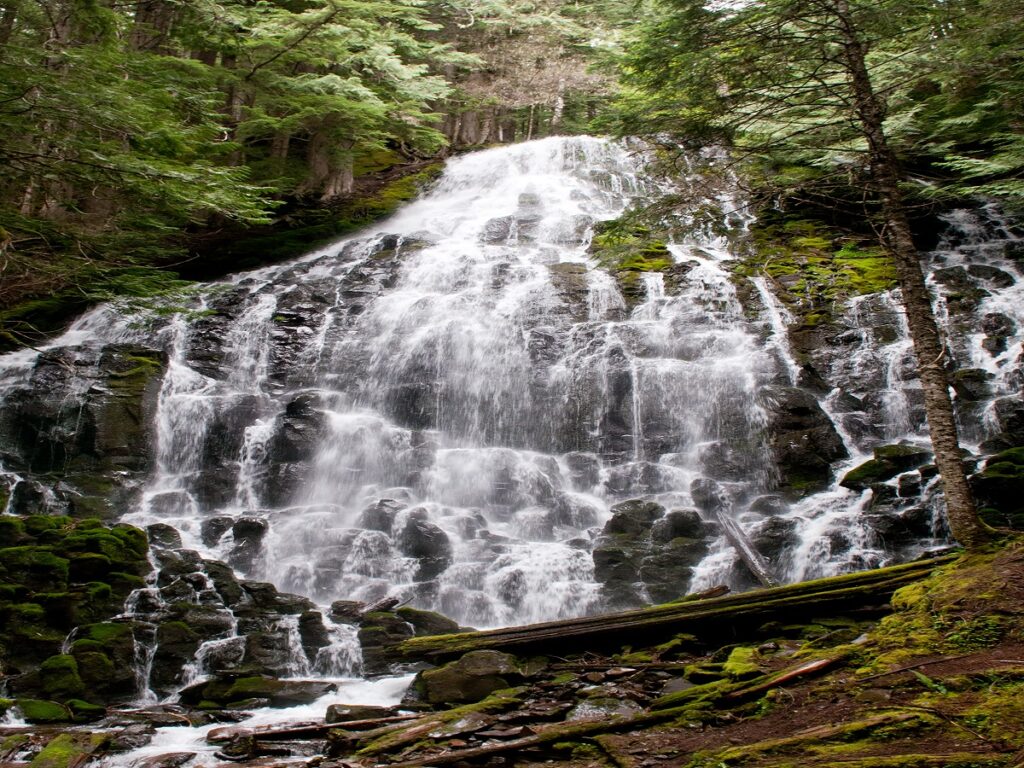
Located on the western slope of Mount Hood, Ramona Falls flows 120 feet over a wall of basalt columns shaped by ancient lava. Early explorers mapped the area in the early 1900s, and today it remains a favorite among seasoned hikers. The 7-mile round-trip trail crosses the Sandy River and passes through a forest of pine and hemlock. The falls’ delicate, lacy appearance as the water spreads across rock steps makes it one of Oregon’s most photogenic yet peaceful natural wonders.
2. Cummins Falls, Tennessee
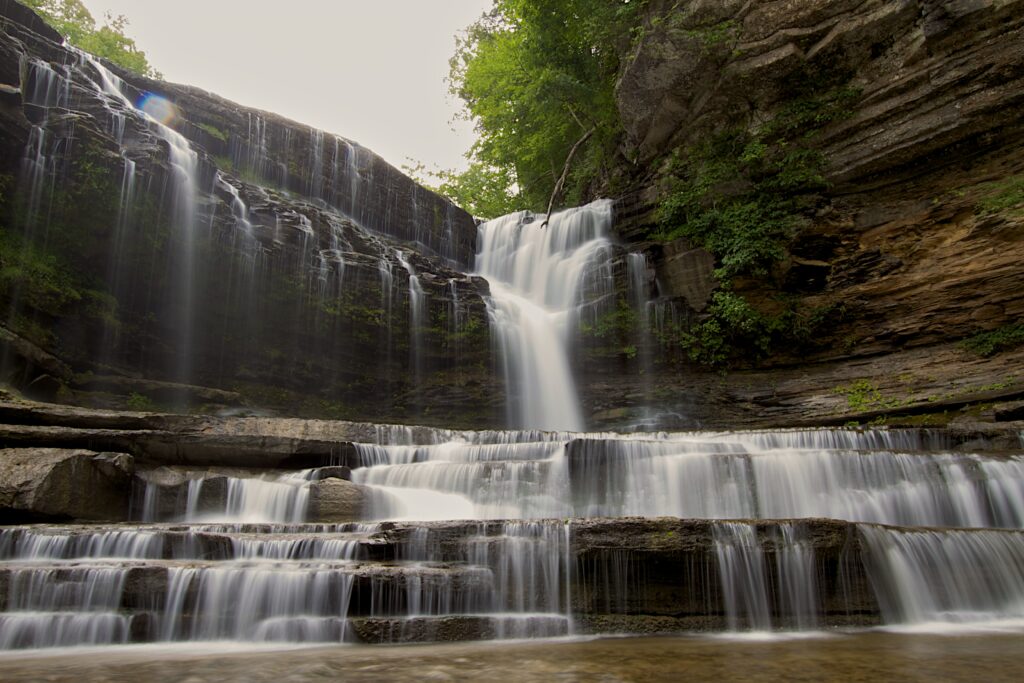
Tucked within the Cumberland Plateau, Cummins Falls plunges 75 feet into a natural basin carved by the Blackburn Fork River. The site was once part of a 19th-century mill operation before becoming a state park in 2011. The gorge, formed by thousands of years of water erosion, features tiered rock ledges and deep swimming holes. Visitors reach the falls via a moderately challenging trail that involves wading through shallow water, rewarding them with a stunning hidden escape in rural Tennessee.
3. Dry Falls, North Carolina
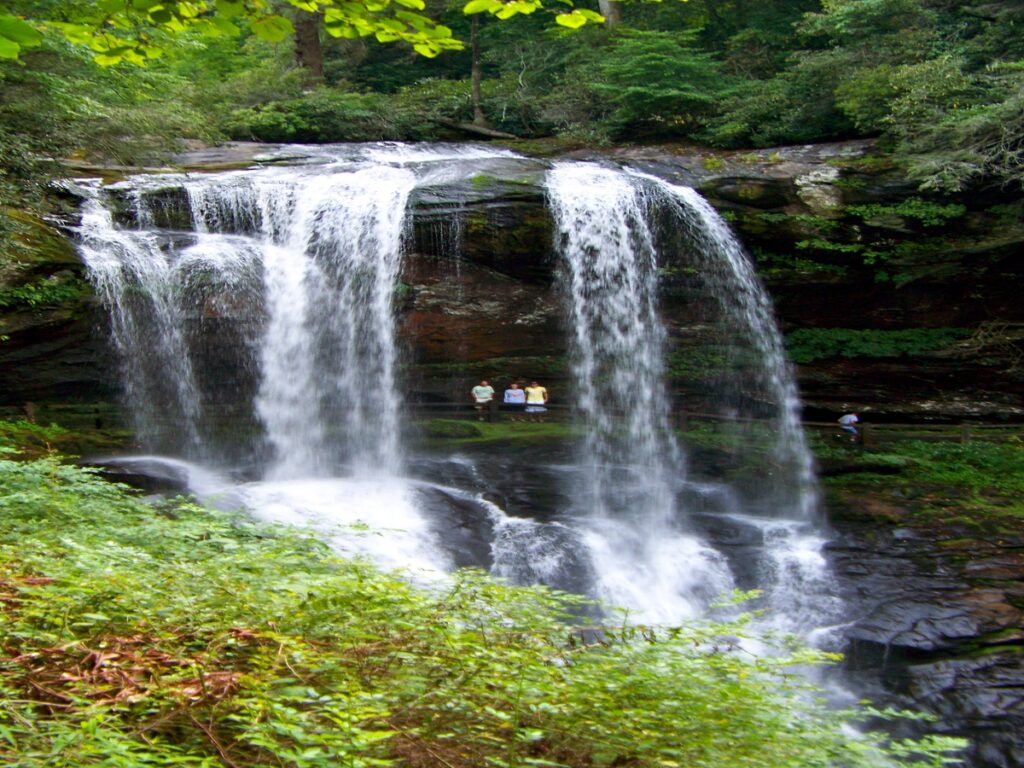
Set along the Cullasaja River near Highlands, Dry Falls earned its name because visitors can walk behind its curtain of water without getting soaked. The cascade drops about 75 feet, flowing over cliffs more than 200 million years old. The U.S. Forest Service added a walkway and observation area in the 1930s, preserving easy access while protecting its natural surroundings. The cool mist, combined with the sound of the rushing Nantahala waters, creates a peaceful mountain experience away from busy highways.
4. Havasu Falls, Arizona

Hidden deep within the Havasupai tribal lands in the Grand Canyon, Havasu Falls is famous for its bright turquoise water cascading 100 feet into travertine pools. Its unique blue color comes from high mineral content in the surrounding limestone. The waterfall, sacred to the Havasupai people for centuries, can only be reached by a 10-mile hike or horseback ride with a tribal permit. Despite its growing reputation, it remains a remote and breathtaking desert oasis far removed from the usual canyon crowds.
5. Bash Bish Falls, Massachusetts
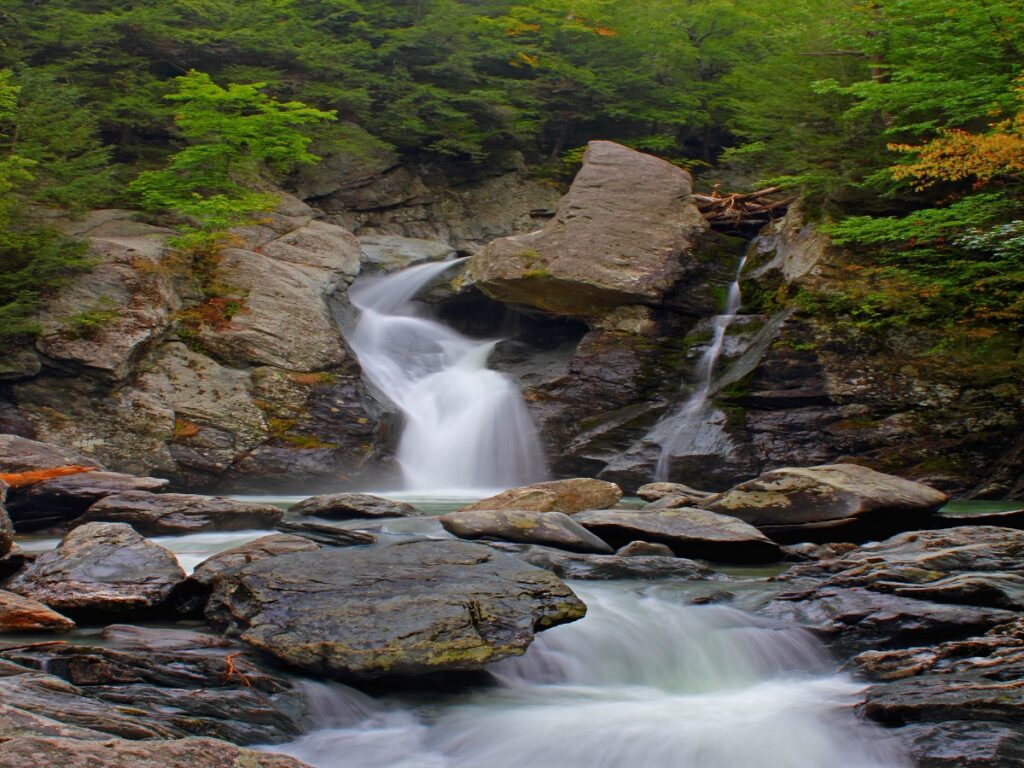
Straddling the Massachusetts–New York border, Bash Bish Falls tumbles 80 feet through a narrow gorge framed by the Taconic Mountains. The falls were shaped by melting glaciers during the last Ice Age and later became a local secret among settlers in the 1700s. The twin cascades drop into a clear pool surrounded by mossy rock and dense forest. Visitors can access the site via short trails from either state, finding a cool, shaded escape that feels untouched despite its accessibility.
6. Toketee Falls, Oregon
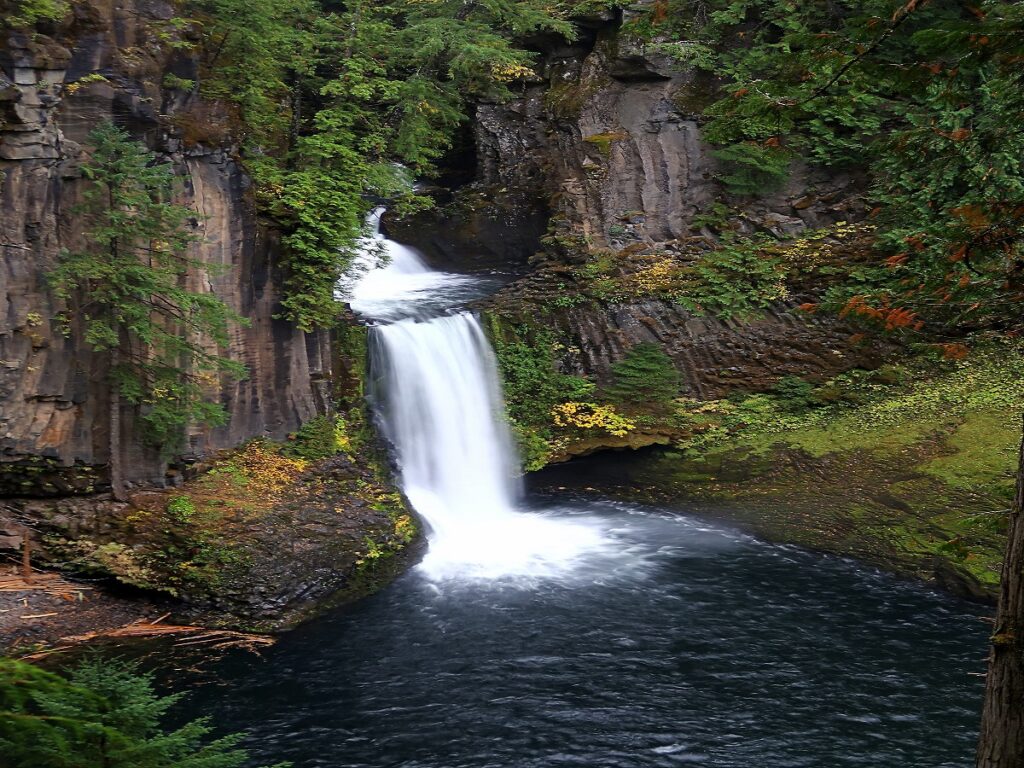
Flowing from the North Umpqua River, Toketee Falls is one of Oregon’s most striking natural features. It drops in two stages: first, 40 feet, then 80 feet through towering basalt cliffs created by ancient volcanic activity. The name “Toketee,” from the Chinook language, means “graceful,” perfectly describing its elegant flow. The short trail built in the 1950s remains well-maintained but lightly used. Wooden platforms provide excellent views while preserving the pristine forest environment that surrounds the falls.
7. Lost Creek Falls, Wisconsin

Hidden near the town of Cornucopia in northern Wisconsin, Lost Creek Falls offers a quiet, forested retreat. The 8-foot waterfall flows gently over red sandstone, rock formations dating back more than 500 million years. Though modest in size, its charm lies in the chance to walk behind the water curtain into a small cavern. The short trail and footbridge were improved in the early 2000s, yet the area still feels remote, offering a rare sense of calm and natural simplicity.
8. Bridal Veil Falls, Colorado
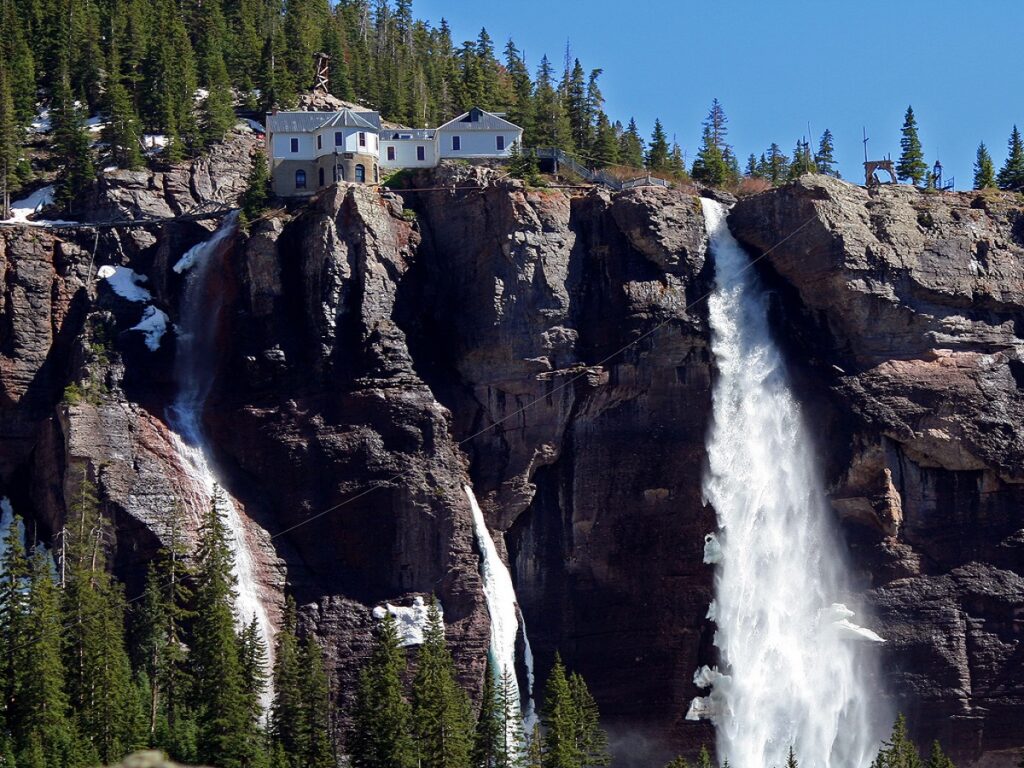
At 365 feet, Bridal Veil Falls near Telluride is Colorado’s tallest free-falling waterfall. It was first documented by miners in the late 1800s and later became the site of a small hydroelectric power plant. The narrow road leading to the top was built in the early 1900s, offering a rugged but rewarding climb. Surrounded by snow-capped peaks and wildflowers, the view from below is spectacular. In winter, the frozen cascade draws experienced ice climbers from around the country.
9. Falling Spring Falls, Virginia
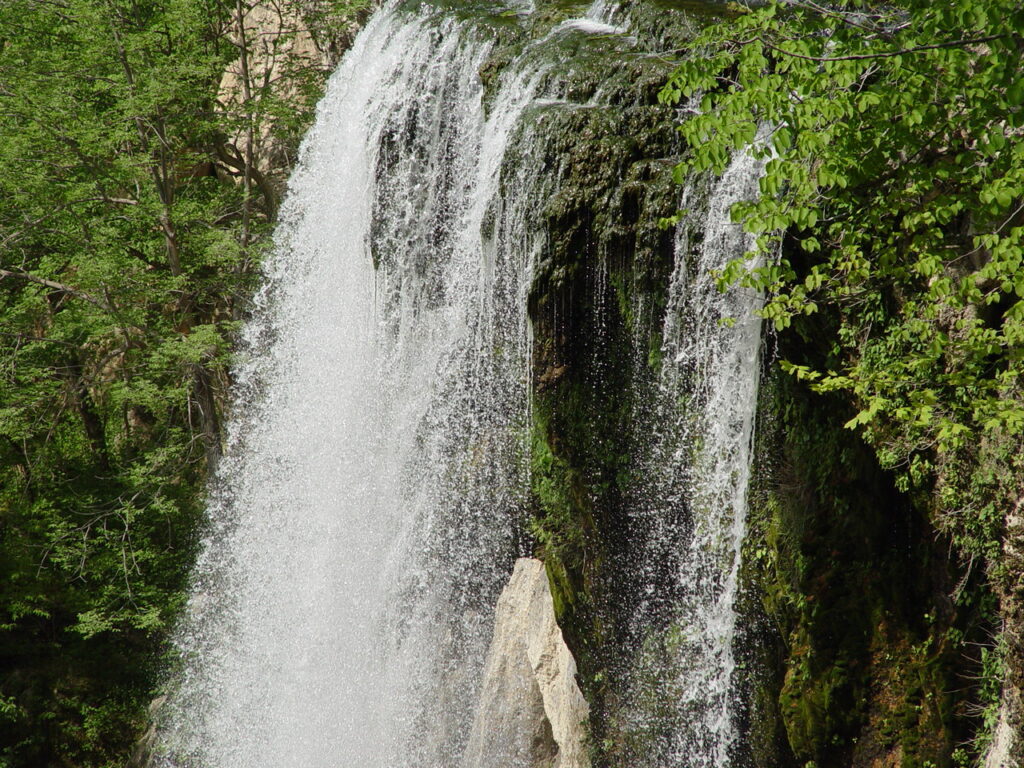
Located near Covington, Falling Spring Falls drops nearly 80 feet into a lush valley surrounded by limestone cliffs. Thomas Jefferson mentioned it in his 1781 writings, praising its beauty as one of Virginia’s finest natural scenes. The steady flow comes from underground springs, which feed the cascade year-round. The overlook, built in the 1960s, provides safe viewing while preserving the landscape. Its easy roadside access makes it a convenient yet surprisingly quiet stop along the Allegheny Mountains.
10. Moss Glen Falls, Vermont

Near the town of Stowe, Moss Glen Falls flows through a rugged gorge framed by hardwood forest. The 125-foot waterfall formed thousands of years ago when glacial runoff carved through the Green Mountains. The trail, maintained since the 1930s, allows for close viewing without disturbing the delicate ecosystem. Visitors can enjoy the sound of rushing water echoing through moss-covered rocks, making it a classic example of Vermont’s tranquil natural scenery away from crowded hiking routes.
11. Catlin Brook Falls, New York
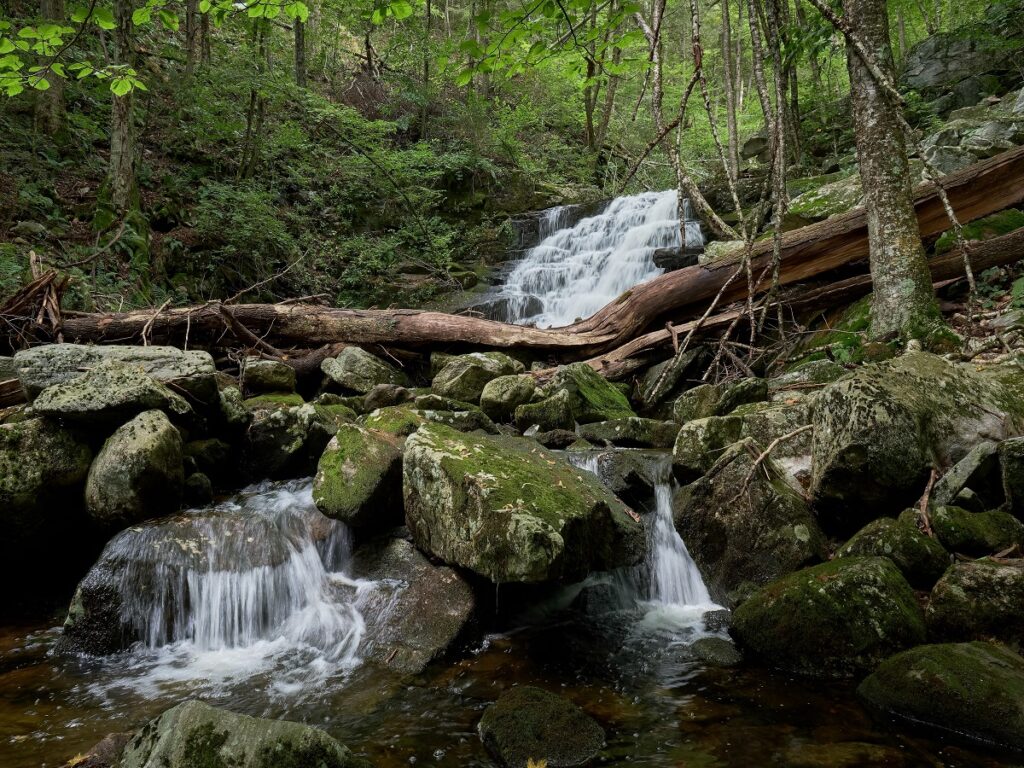
Deep within the Shawangunk Mountains, Catlin Brook Falls remains one of New York’s least-visited natural sites. The 60-foot drop flows over layers of sandstone and shale formed millions of years ago. It was first recorded on local topographic maps in the early 20th century, but never developed for tourism. The short but steep trail leads hikers through dense ferns and quiet woodland. Its peaceful setting and minimal signage ensure that this Hudson Valley gem stays largely undiscovered.
12. Gorman Falls, Texas
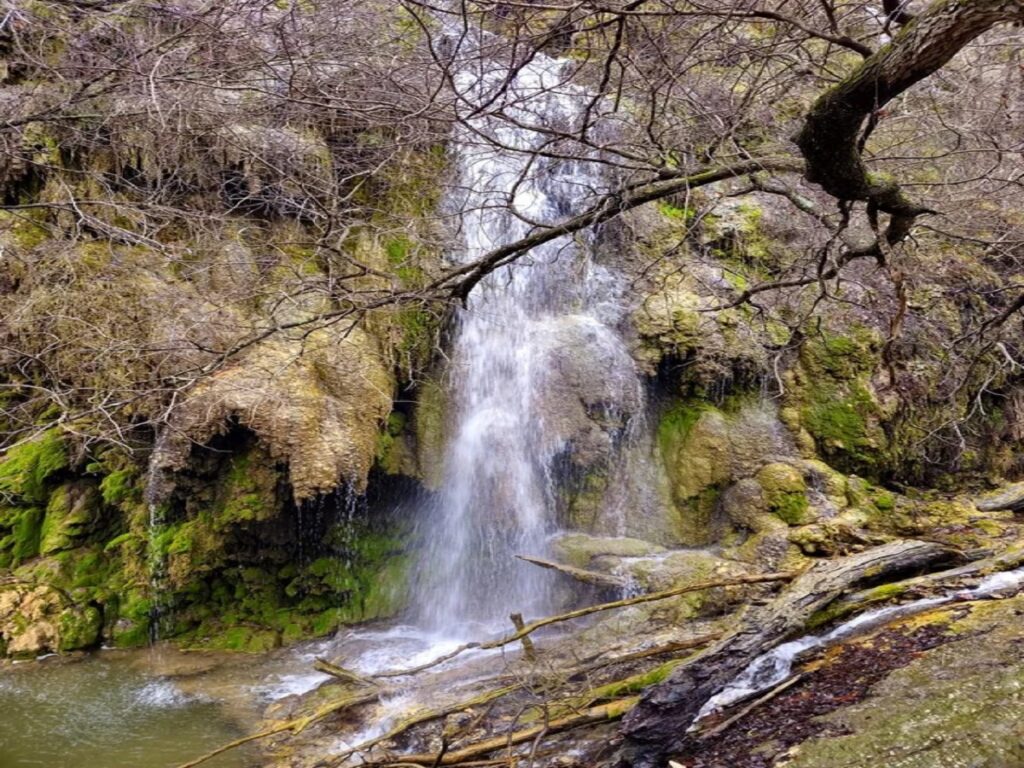
Gorman Falls, located in Colorado Bend State Park, plunges 70 feet down a travertine wall covered in green moss and ferns. The formations continuously grow as minerals from the spring water deposit along the cliffside. Settlers discovered it in the 1800s, but the site remained largely unknown until the park opened in 1984. Reaching the falls requires a rocky 1.5-mile hike through desert terrain. Its lush oasis contrasts beautifully with the dry Texas landscape, rewarding hikers with a cool retreat.
13. Proxy Falls, Oregon
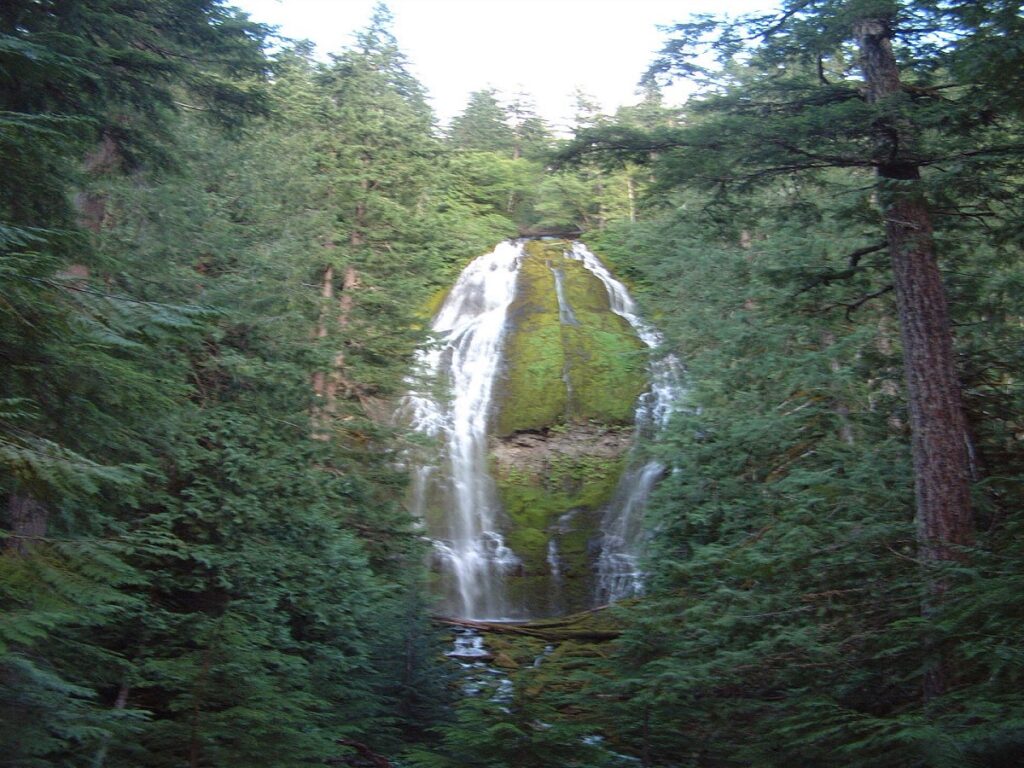
Proxy Falls lies within the Three Sisters Wilderness, created by ancient lava flows that shaped the McKenzie Pass. Dropping 226 feet, the water fans gracefully across moss-covered basalt, making it one of Oregon’s most photographed but still serene destinations. The loop trail, established in the 1960s, weaves through lava fields and forest, offering a short but scenic journey. During snowmelt season, the falls reach full strength, creating a misty, almost otherworldly landscape of green and stone.
14. Amnicon Falls, Wisconsin
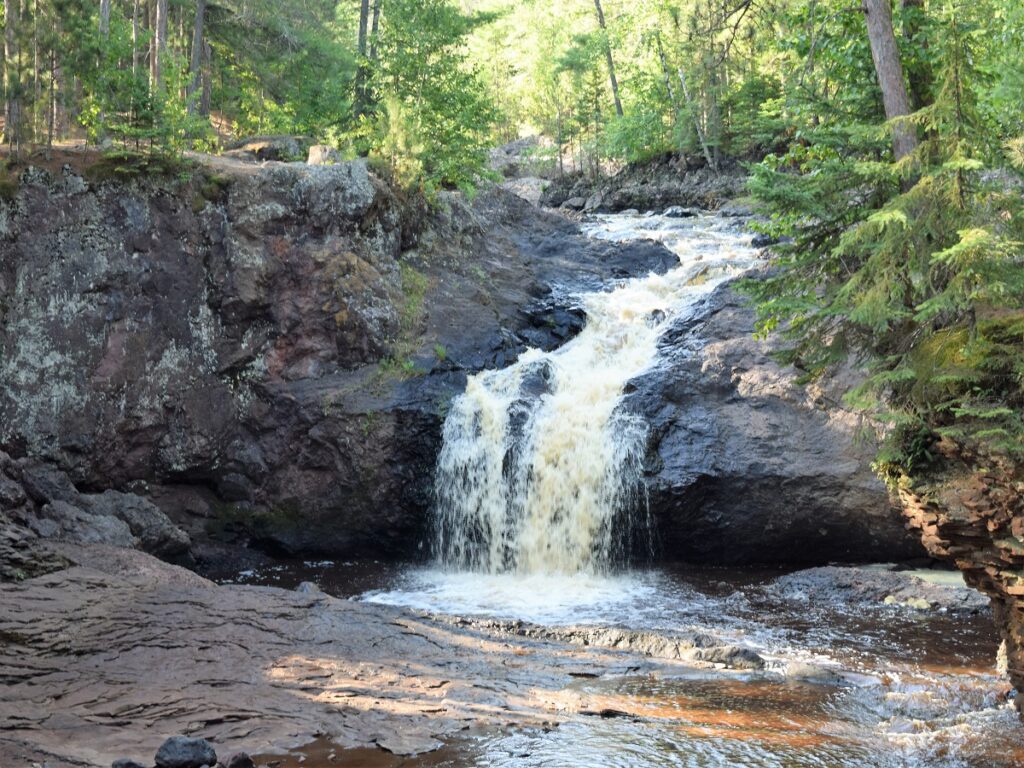
Amnicon Falls, located in Amnicon Falls State Park, flows through a series of small drops and rapids along the Amnicon River. The region’s sandstone base dates back 500 million years, shaped by glacial meltwater. The park, founded in 1930, features rustic bridges built by the Civilian Conservation Corps. Though modest in height, the falls’ multiple tiers and amber-colored water create a striking visual. The peaceful sound of rushing water and thick forest make it a charming offbeat stop.
15. Franklin Falls, Washington
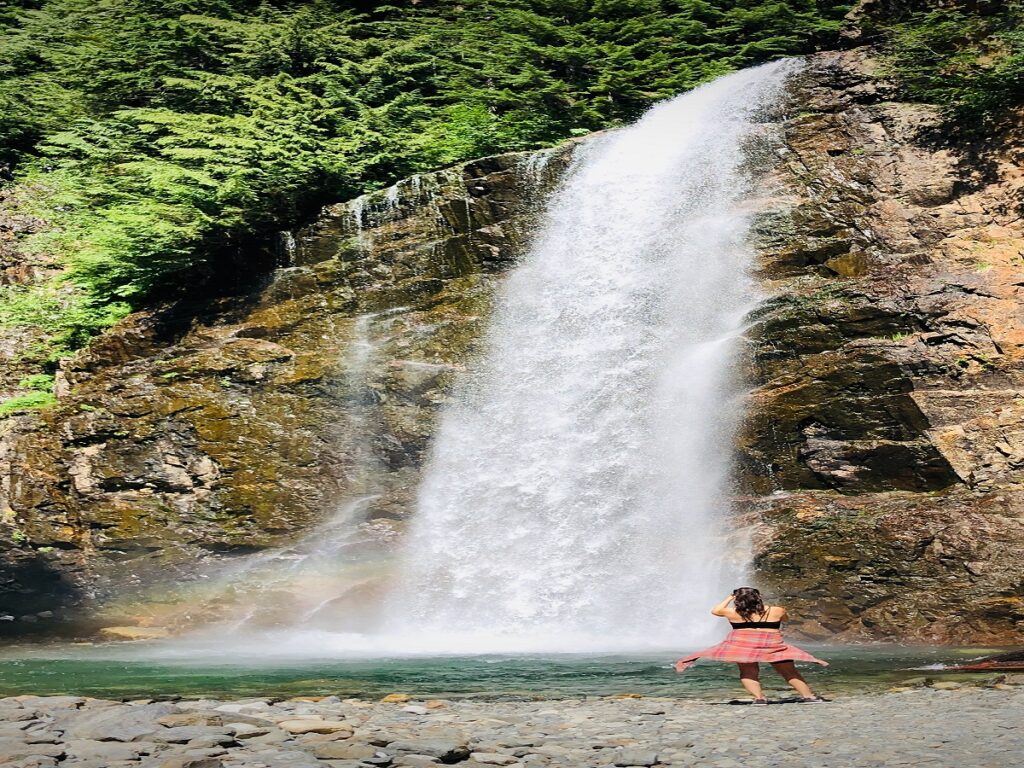
Located off the old Denny Creek route near Snoqualmie Pass, Franklin Falls drops 70 feet over basalt cliffs carved by glacial meltwater. Formed thousands of years ago, the area became accessible in the 1920s when forest roads were built for logging. The gentle trail follows the South Fork Snoqualmie River, making it family-friendly yet scenic. In winter, the falls freeze into columns of ice, turning this quiet mountain site into a stunning natural ice sculpture each year.
16. Kings Canyon Falls, California
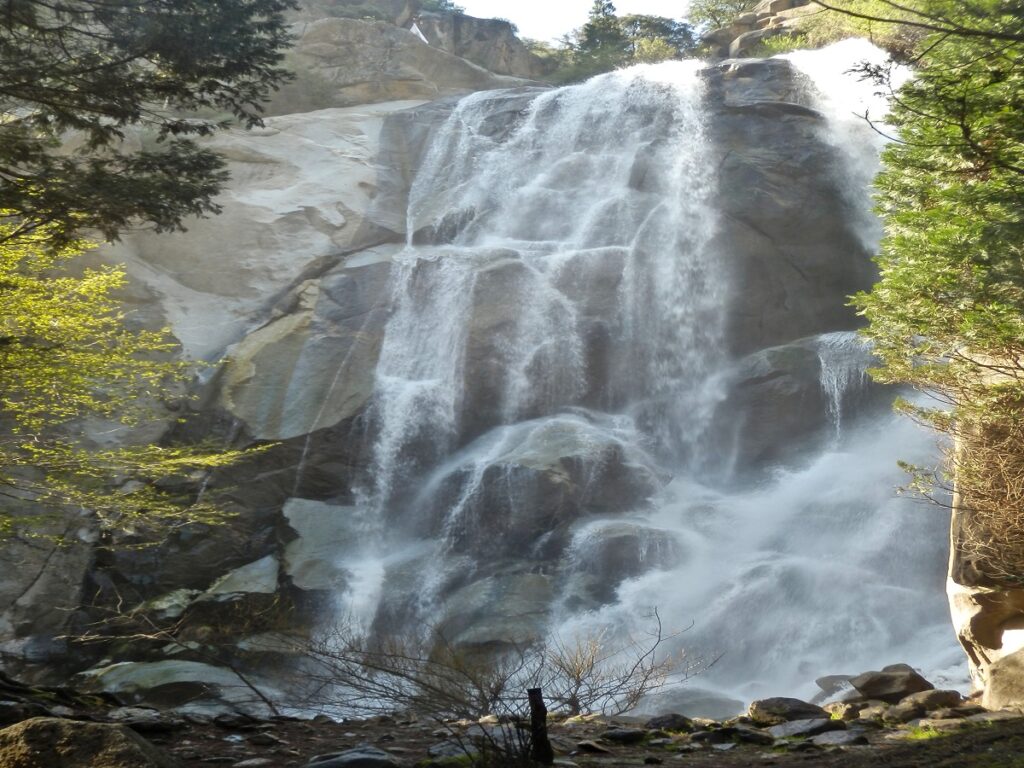
Deep within Sequoia National Forest, Kings Canyon Falls flows seasonally from Sierra snowmelt, cascading over smooth granite into a rocky basin. It was first mapped by explorers in the 1860s, though its remote setting keeps it peaceful even today. The moderate trail passes through pine forests and wildflower meadows before reaching the falls. Best viewed in spring, the rushing water contrasts beautifully with the granite cliffs and towering trees surrounding this rarely crowded California gem.
17. Munising Falls, Michigan
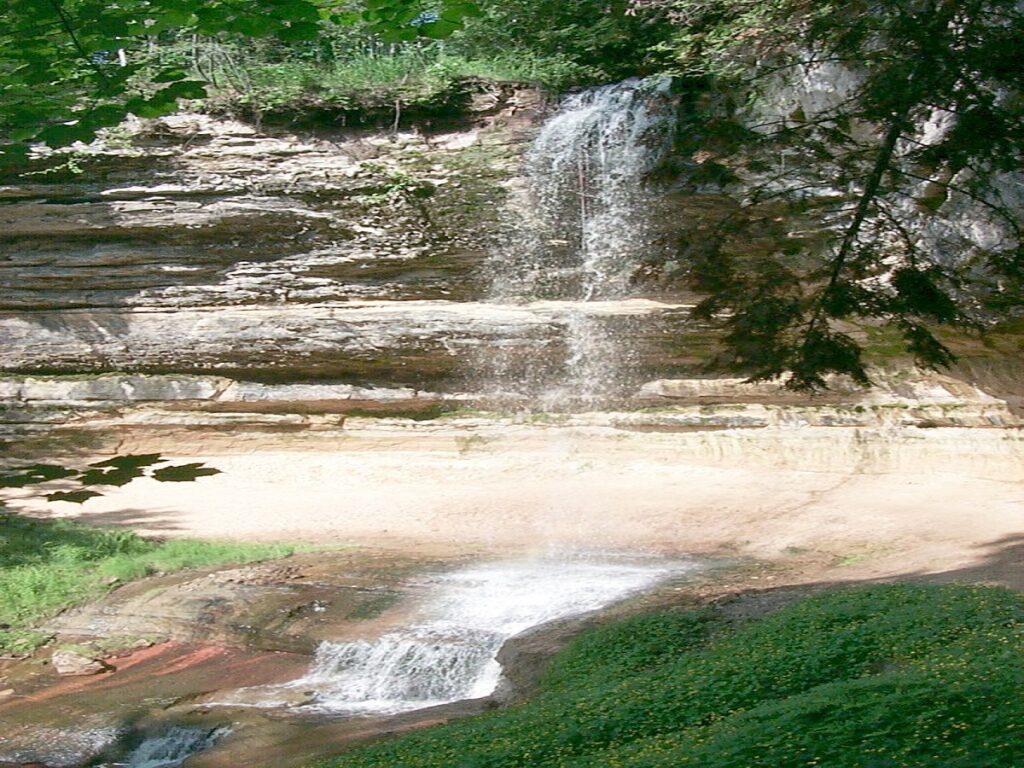
Munising Falls is one of several picturesque cascades within Pictured Rocks National Lakeshore along Lake Superior. Dropping 50 feet over a sandstone cliff formed during the Cambrian period, the falls have been protected since 1966. The short, paved trail follows a wooded stream to viewing platforms at different heights. Despite its easy access, it remains calm and uncrowded. The steady flow, layered rock, and cool forest air make it a peaceful stop in Michigan’s Upper Peninsula.
18. St. Mary’s Falls, Montana

Tucked inside Glacier National Park, St. Mary’s Falls flows in three tiers through a deep canyon carved by Ice Age glaciers. The turquoise water contrasts sharply against red and gray rock layers, showcasing Montana’s dramatic landscape. The 1.7-mile trail to the falls was developed in the 1930s and remains lightly trafficked outside summer months. Surrounded by alpine forest and mountain peaks, it’s an ideal example of untouched wilderness beauty away from busy park attractions.
19. Cane Creek Falls, Alabama

Within Fall Creek Falls State Park, Cane Creek Falls drops 85 feet into a limestone gorge surrounded by forested cliffs. The area formed millions of years ago when marine sediment uplifted and eroded into plateaus. First surveyed in the early 1900s, the site remains one of Alabama’s quieter nature destinations. The falls are accessible via short walking paths leading to scenic overlooks. The sound of rushing water and birdsong fills the air, creating a timeless natural escape.
20. Rainbow Falls, Hawaii
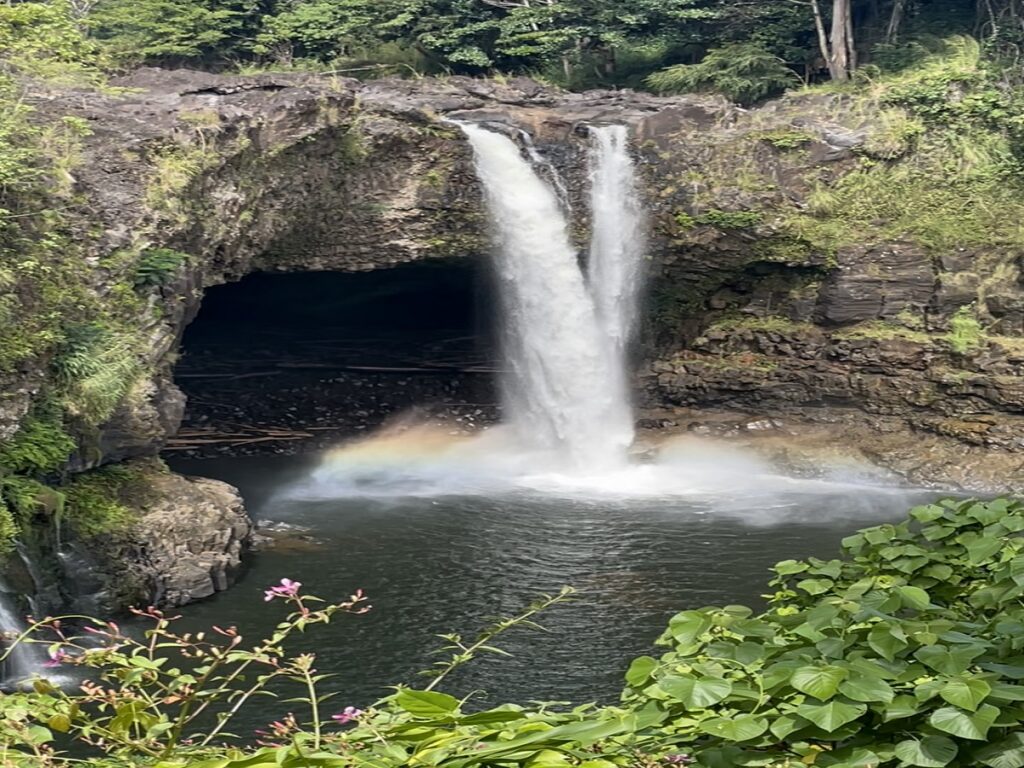
Located near Hilo on Hawaii’s Big Island, Rainbow Falls plunges 80 feet over a lava cave formed by ancient eruptions. Its Hawaiian name, Waiānuenue, means “rainbow water,” referring to the colorful arcs often visible in the morning mist. The site became a public park in 1911 and remains surrounded by tropical plants and banyan trees. Despite being close to town, it maintains a serene atmosphere, offering visitors a perfect blend of culture, geology, and natural beauty.
Comments